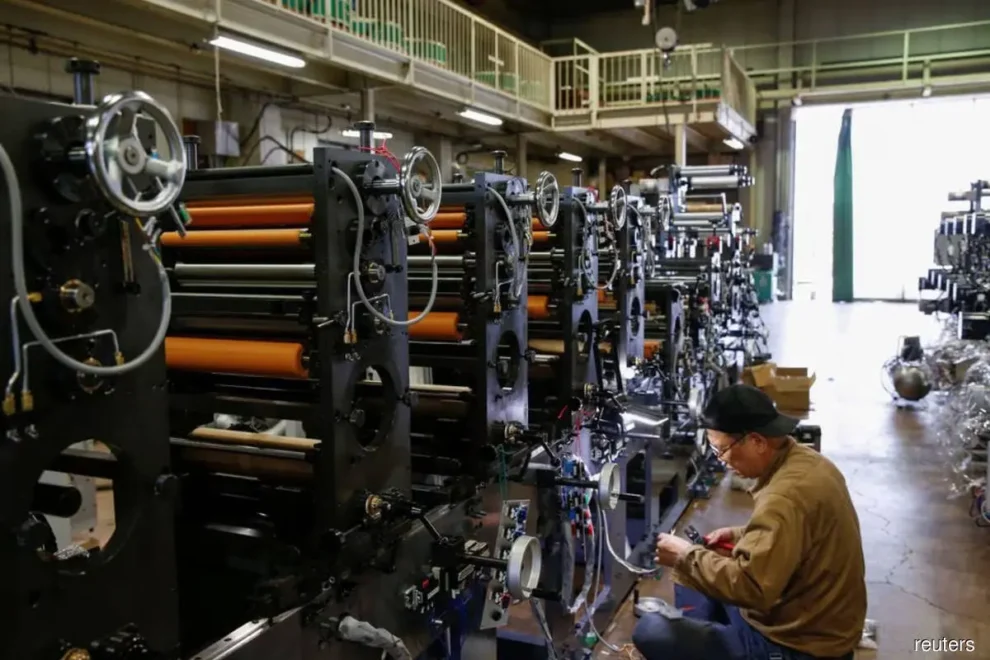Global manufacturing activity remained weak in November on soft demand, surveys showed on Friday, as euro zone factory activity kept contracting, while there were mixed signs on the strength of China’s economy.
To rein in steep inflation, central banks have aggressively raised interest rates but those hikes have largely come to an end as policymakers look instead to cushioning the blow on their economies.
In the 20-member euro zone, Hamburg Commercial Bank’s final manufacturing Purchasing Managers’ Index (PMI), compiled by S&P Global, was firmly below the 50 mark dividing contraction from expansion in a broadbased downturn.
Still, it did rise to 44.2 in November from October’s 43.1, above a 43.8 preliminary estimate. An index measuring output, which feeds into a composite PMI due on Tuesday seen as a barometer of economic health, climbed to 44.6 from 43.1.
“It’s not great but we have seen an upward revision which is a good sign – it is a harbinger of less bad times to come. For the euro zone the worst will be over early next year,” said Holger Schmieding at Berenberg.
But while sub-indices perked up a bit last month, HCOB cautioned that the uptick was timid and that it was too early to call it an upward trend.
In Germany, Europe’s largest economy, its PMI was stubbornly sub-50 although it did show signs of improvement while in France factories again suffered from weak demand.
In Britain, outside the European Union, there were further signs that it might be turning a corner in a long-running downturn but companies remained cautious.
ASIAN PAIN
China’s private Caixin/S&P Global manufacturing PMI unexpectedly rose to 50.7 in November from a 49.5 reading in October, surpassing analysts’ forecasts.
The reading came a day after an official survey showed a contraction in both manufacturers’ and non-manufacturers’ activity, underscoring deepening troubles in the world’s second largest economy.
“The domestic market cannot make up for losses in Europe and the United States. The data shows that factories are producing less and hiring fewer people,” Dan Wang, chief economist at Hang Seng Bank China, said of China’s PMI readings, which have different samples.
Export-reliant Japan, South Korea and Taiwan bore the brunt of sluggish global demand with their manufacturing activity remaining stagnant in November, surveys showed.
“It’s hard to expect a recovery in Asia any time soon,” said Toru Nishihama, chief emerging market economist at Dai-ichi Life Research Institute. “While exports probably hit bottom, they won’t accelerate much from here as the global economy lacks a key driver of growth.”
Japan’s final au Jibun Bank manufacturing PMI fell to 48.3 in November from 48.7, shrinking at the fastest pace in nine months.
South Korea’s PMI stood at 50.0 in November, rising slightly from October’s 49.8. The factory gauge rebound came after 16 straight months of contraction through October, the longest downturn since the survey began in April 2004.
Manufacturing activity also shrank in Taiwan, Vietnam and Malaysia, but expanded in India, Indonesia and the Philippines, the surveys showed.
China’s economy has struggled this year to mount a strong post-pandemic recovery, adding gloom to an already darkening global outlook as U.S. and European economies begin to feel the pinch from past aggressive interest rate hikes.
“The weakness in China’s service sector is particularly worrying, as it shows demand is evaporating even as supply picks up,” Dai-ichi Life Research Institute’s Nishihama said.
In India, the PMI survey showed the country’s manufacturing growth accelerated in November on robust output and new orders.
While domestic demand appeared strong, international demand took a hit, with new export orders at a five-month low.
Source: Reuters
















